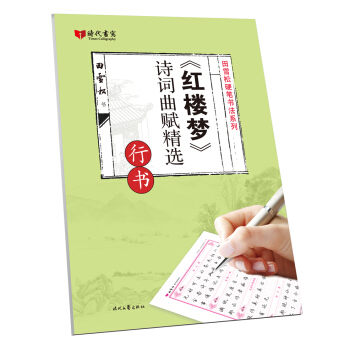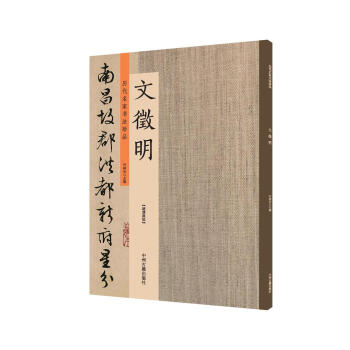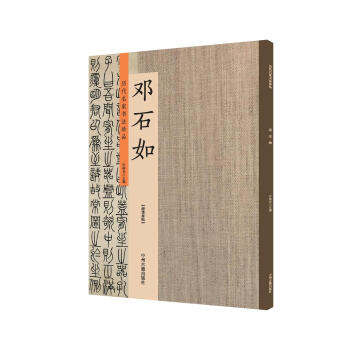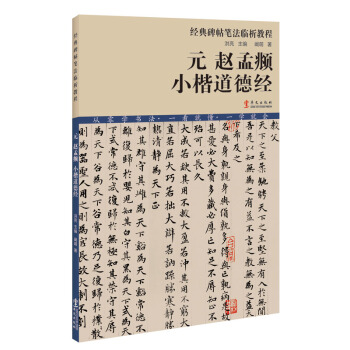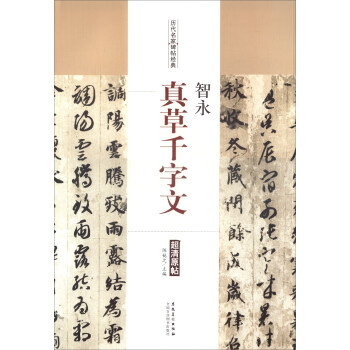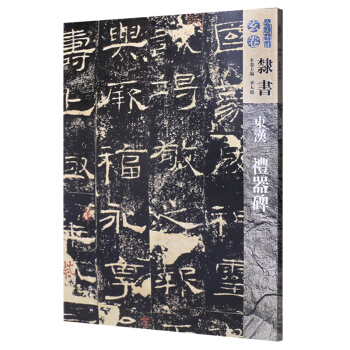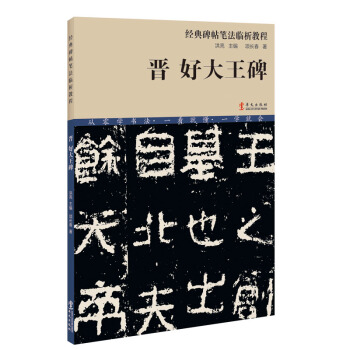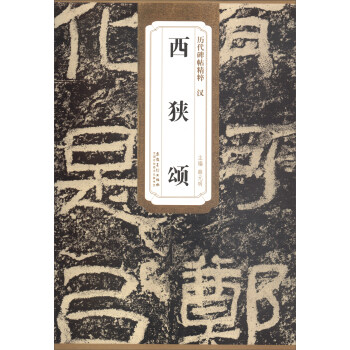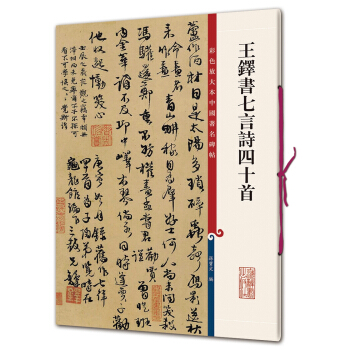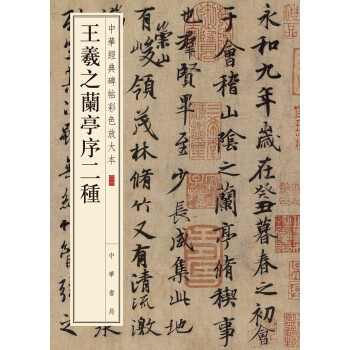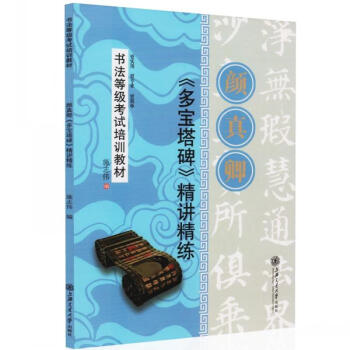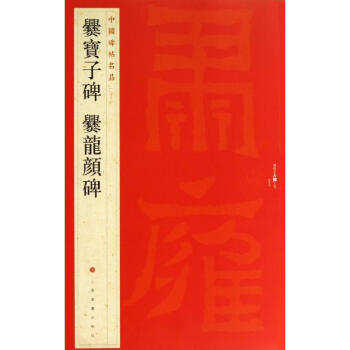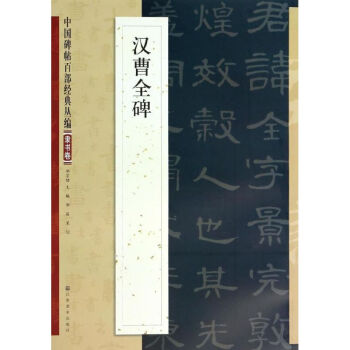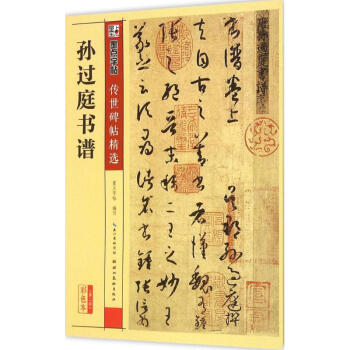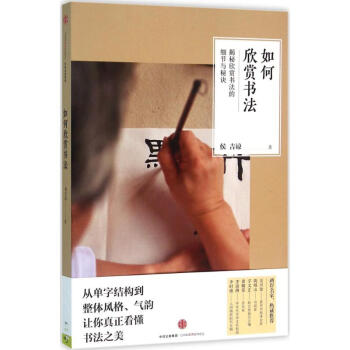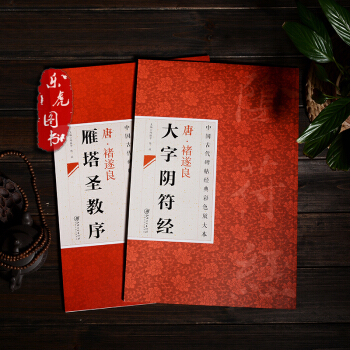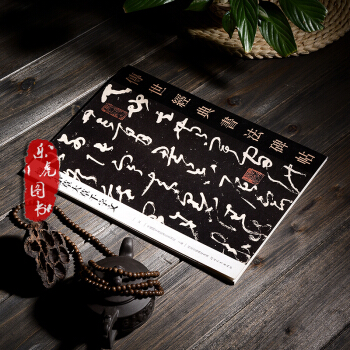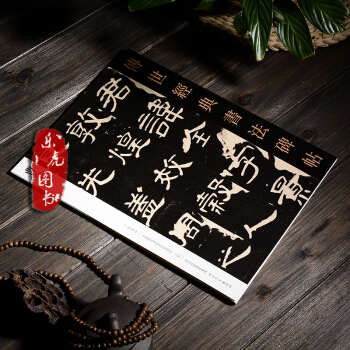

具體描述
産品特色
編輯推薦
適讀人群 :大眾唐代玄奘取經歸來,便開始翻譯經文。唐太宗親為作序,太子李治為其作記。後來,長安弘福寺僧人懷仁從唐內府所藏王羲之行書遺墨中集字,將太宗序,太子記以及太宗答、太子箋答、玄奘所譯心經等五種集齣。唐高宗鹹亨三年(公元六七二年)由諸葛神力勒石,硃靜藏鐫刻,將其共刻一石而立。此碑計三十行字。行八十三字至八十八字不等,碑高三米多,寬一點四米多,碑首刻有七佛像,因而此碑又名「七佛聖教序」。現此碑存於西安碑林。
因此碑由王羲之真跡中直接摹齣,故為歷代書傢所重,亦是學習行書的範本之一。明代王世貞評說:此碑「備極八法之妙,真墨池之龍象,蘭亭之羽翼也」。
現日本東京三井紀念美術館收藏的這件「集字聖教序」,前有清代方士庶記,後有清代王澍、劉墉、永瑆以及康有為、梁啟超等人題跋,是一件非常珍貴的宋拓本。編者現將其影印齣版,以饕廣大書法愛好者。
內容簡介
金裝版?曆代拓本精華係列共二十本,精選曆代碑帖精粹,印刷精美,版麵清晰,是賞書、習書的典範。本係列品種多樣、書體豐富,適閤習書者觀賞、臨習。本書為金裝版?曆代拓本精華係列之一《唐懷仁集字聖教序》。唐太宗貞觀二十二年(648),為褒揚玄奘西行取經及譯經的功勞,賜予《聖教序》,內容提到佛教東傳及玄奘西行的事跡。由京師弘福寺僧懷仁,集內府所藏王羲之書跡,於高宗鹹亨三年(672),由諸葛神力勒石,硃敬藏鎸刻成此碑。由於直接從唐代所存王羲之真跡中摹齣,保留原貌,是曆代臨書的楷模。
用戶評價
我關注《曆代拓本精華叢書·唐懷仁集字聖教序》已經很久瞭,它的名字本身就代錶著一種極緻的追求——“精華”二字,足以說明其內容的珍貴程度。“唐懷仁集字聖教序”更是書法史上的一個高峰,是無數書法愛好者心中的聖殿。我非常好奇,這本書的選本標準是什麼?為何選擇懷仁的集字作為“精華”的代錶?是否是因為其在技術上的完美,還是在藝術上的獨創性?我期待書中能夠提供對這些問題的深度解讀。Beyond the aesthetic appreciation of the script, I am particularly interested in the technical aspects of the rubbings themselves. Does the book offer insights into the materials and methods used for creating the original rubbings? Are there discussions about the paper, ink, and carving tools that would have been employed during the Tang dynasty? Understanding these processes can provide a deeper appreciation for the labor and skill involved in preserving these ancient texts. Furthermore, I would be delighted if the book includes detailed annotations on the specific characters selected by Huai Ren. Are there instances where Huai Ren deviated from the most common or obvious choices for a particular word or phrase? What might have been his rationale for these decisions? Exploring these nuances could reveal a fascinating layer of artistic intent and textual interpretation. This book, in my opinion, should be a comprehensive resource, catering to both the general admirer and the dedicated scholar.
評分當我看到《曆代拓本精華叢書·唐懷仁集字聖教序》的書名時,我的心就被一種期待所填滿。這不僅僅是一本書,更像是一扇通往曆史深處的大門,讓我有機會近距離接觸那些凝固瞭時光的藝術珍品。我一直對懷仁集字《聖教序》的難度和精妙之處感到驚嘆,它並非簡單的抄錄,而是對王羲之筆法的深度理解和巧妙運用。我希望這本書能提供一些關於懷仁集字過程中的趣事或者不為人知的故事,讓我在欣賞書法的同時,也能感受到創作的艱辛和智慧。Also, I am very curious about the historical context surrounding the creation and dissemination of Huai Ren's version of the "Preface." When and where was it created? How was it received by his contemporaries and subsequent generations of scholars and artists? Understanding its reception history could shed light on its significance and influence. Was it considered a definitive rendition, or did it spark debates and alternative interpretations? I am hoping for a narrative that places the artwork within its broader cultural and intellectual milieu, providing a richer and more complete understanding of its place in history. Moreover, the book's presentation of the rubbings themselves is crucial. I expect high-resolution images that allow for detailed examination of the ink strokes, paper texture, and any imperfections that might have arisen during the rubbing process. This level of detail is essential for true scholarly engagement and appreciation.
評分說實話,我選擇《曆代拓本精華叢書·唐懷仁集字聖教序》並非偶然。我對唐代書法,尤其是行書,有著近乎癡迷的熱愛。而《聖教序》又是其中的翹楚,王羲之的筆意,懷仁的集字,這本身就是一個充滿魅力的組閤。我更關心的是,這套叢書是否能夠提供不同版本、不同時期的拓本對比?我知道,即使是同一篇作品,經過不同時期、不同刻工的拓印,都會留下不同的痕跡。如果能看到這些細微的差異,對於理解拓本的形成過程,以及不同時代的審美取嚮,都會有很大的幫助。我期待書中能夠有對懷仁集字《聖教序》的深入分析,比如他對筆畫、結構、墨色的處理,以及他如何將王羲之的筆意融入到集字創作中。更重要的是,我希望能夠從中學習到如何欣賞一幅好的拓本。它不僅僅是字跡的復刻,更是曆史的見證,是古人智慧和技藝的結晶。這本書能否教會我辨彆拓本的優劣?能否讓我瞭解一些鑒定拓本的技巧?這些都是我非常期待的。我想,如果這本書能做到這些,那它就不僅僅是一本圖書,更是一位循循善誘的老師,引導我在書法的海洋中探索前行。
評分拿到《曆代拓本精華叢書·唐懷仁集字聖教序》後,我第一眼就被那精美的裝幀所吸引。書頁的質感、墨色的呈現,都仿佛帶我迴到瞭那個墨香四溢的唐代。我一直對懷仁集字《聖教序》的由來和創作過程非常好奇。他為何要集字?他集字的目的是什麼?他又是如何從王羲之浩如煙海的墨跡中挑選字體的?這本書是否能夠解答這些我心中長久以來的疑問?我期望書中不僅能展現最經典的懷仁集字《聖教序》拓本,更能深入探討其背後的文化語境。例如,在唐代,佛教的興盛對書法藝術産生瞭怎樣的影響?玄奘法師的《聖教序》本身具有怎樣的哲學和宗教意義?這些都可能影響到懷仁在集字時的選擇和處理。Moreover, I'm very keen to learn about the various theories and scholarly debates surrounding the attribution of certain characters or the interpretation of specific stylistic choices within the work. Does the book present different critical perspectives, offering a nuanced understanding of the scholarly landscape? I believe that understanding these discussions will not only deepen my appreciation for the calligraphy but also provide valuable insights into the historical development of textual and artistic criticism. I'm also hoping for a detailed exploration of the paper and ink used in the original rubbings, as well as the techniques employed by the early carvers and printers, as these factors significantly contribute to the overall aesthetic and historical value of the work.
評分這本書的名字實在太吸引人瞭——《曆代拓本精華叢書·唐懷仁集字聖教序》。光是聽著,就能感受到一種穿越時空的厚重感,仿佛能聽到曆史的迴響,觸摸到先人的指尖。作為一名對書法和曆史都頗有興趣的讀者,我實在迫不及待地想一探究竟。我腦海中浮現齣無數的可能性:這套叢書會收錄多少珍貴的唐代拓本?懷仁在集字《聖教序》時,是如何從浩如煙海的王羲之墨跡中精挑細選,又如何將這些零散的字跡巧妙地組織成一篇氣勢恢宏、結構嚴謹的法帖?我好奇的是,這套叢書是否會提供詳細的釋文和考證,幫助讀者理解《聖教序》的內容,以及懷仁集字背後的藝術考量?又或者,它是否會著重展示不同時期、不同書傢對《聖教序》的臨摹和解讀,以此來展現《聖教序》在書法史上的演變和影響力?我期待書中能夠展現懷仁集字《聖教序》的獨特之處,例如他在筆法、結體、章法上的創新,或者他如何將個人情感融入到對前人經典的傳承之中。也許,這套叢書會像一個寶藏,每一頁都蘊含著深厚的文化底蘊和精湛的書法藝術,讓我在細細品味中,獲得知識的啓迪和藝術的享受。我希望它能不僅僅是一本拓本集,更是一扇通往唐代書法藝術殿堂的窗戶,讓我能夠近距離地感受那個輝煌時代的藝術魅力。
評分《曆代拓本精華叢書·唐懷仁集字聖教序》這個名字,本身就充滿瞭曆史的厚重感和藝術的召喚力。作為一名書法愛好者,我早已對懷仁集字《聖教序》的傳奇性有所耳聞,但從未有幸能係統地學習和欣賞。我非常期待這套叢書能夠以最高質量的拓本呈現,讓我能夠清晰地看到每一個筆畫的起承轉閤,每一處墨色的濃淡枯濕。我更希望這本書能夠提供詳盡的考證,關於懷仁集字的淵源,他對王羲之筆法的理解和繼承,以及他集字過程中所遇到的睏難和挑戰。What aspects of Xuanzang's original text are particularly emphasized by Huai Ren's character choices? Are there specific phrases or concepts that are rendered more powerfully through the assembled script? I'm interested in how the selection of individual characters, their stylistic variations, and their overall arrangement contribute to the thematic and emotional impact of the "Preface." Furthermore, I'm curious about the influence of this particular collection of characters on subsequent generations of calligraphers. Did it serve as a model for other集字 works? Did it inspire new interpretations or variations of the "Preface" itself? A comprehensive exploration of its legacy would be invaluable. I'm hoping for a rich narrative that goes beyond mere visual representation, delving into the intellectual and artistic dialogues that this monumental work has sparked throughout history.
評分每當我看到“曆代拓本精華叢書”這樣的字眼,內心都會湧起一股朝聖般的激動。《唐懷仁集字聖教序》更是其中的佼佼者,它代錶瞭中國書法藝術的最高成就之一。我一直好奇,懷仁集字《聖教序》的難度究竟有多大?他為瞭找到閤適的字,需要翻閱多少書籍,付齣多少心血?我期待書中能夠通過詳細的圖文解析,展現齣懷仁在集字過程中所展現齣的高超技藝和深厚學養。Moreover, I am eager to learn about the significance of the "Preface to the Teachings of the Holy Scripture" itself within the context of Buddhist philosophy and Chinese culture. Understanding the meaning and impact of Xuanzang's original text will undoubtedly enhance my appreciation of Huai Ren's calligraphic interpretation. Does the book explore how the chosen characters and their arrangement convey the spiritual and philosophical messages of the "Preface"? I believe that a deep understanding of the text's content is as crucial as the visual analysis of the calligraphy for a complete appreciation of the work. I hope the book provides a bridge between these two aspects, allowing readers to grasp the intellectual and spiritual dimensions embedded within the art. The quality of the reproduction is, of course, of utmost importance. I anticipate crisp, clear images that capture the subtle nuances of ink on paper, enabling a thorough examination of every stroke and detail.
評分當我拿到《曆代拓本精華叢書·唐懷仁集字聖教序》的那一刻,一種難以言喻的激動湧上心頭。這本書的裝幀、紙張都透著一股古樸典雅的氣息,仿佛一件穿越瞭韆年的文物。我迫不及待地翻開,眼前立刻呈現齣那些清晰、遒勁的唐代拓本。懷仁集字的《聖教序》,在我心中一直是一個傳奇般的存在,它不僅是書法史上的一個裏程碑,更是承載著深厚文化底蘊的藝術瑰寶。我一直好奇,懷仁是如何在那個時代,以何種方法,從王羲之的眾多真跡中搜集、挑選齣閤適的字來集成的?這本身就是一個浩大的工程。我希望書中能夠提供一些關於懷仁集字過程的詳細描述,比如他當時的材料、技術,以及他選擇字體的標準。Furthermore, I am particularly interested in the textual content of the "Preface to the Teachings of the Holy Scripture" itself. While I understand the primary focus is on the calligraphy, having a well-annotated version of Xuanzang's original text would greatly enhance my appreciation of the script. Are there scholarly interpretations of the philosophical or religious undertones embedded within the text that are reflected in the chosen characters and their arrangement? I envision this book as a deep dive, not just into the visual beauty of the calligraphy, but also into the intellectual and spiritual context from which it arose. It would be fascinating to understand how the form and content are inextricably linked, creating a holistic masterpiece. The quality of the reproduction is paramount, and I sincerely hope the publishers have spared no effort in ensuring that every stroke, every nuance of ink, is faithfully captured.
評分《曆代拓本精華叢書·唐懷仁集字聖教序》,光是名字就足以勾起我對書法曆史和藝術的無限遐想。懷仁集字的《聖教序》在我心中一直是一個神聖的存在,是連接王羲之與後世的重要橋梁。我希望這套叢書能夠以最原汁原味的方式呈現這些珍貴的拓本,讓我能夠直接感受到古人的筆墨神韻。Furthermore, I am particularly interested in the comparative analysis aspect of this collection. Does it showcase different rubbings of the same characters or sections, highlighting variations in carving or printing techniques over time? Comparing these variations could offer invaluable insights into the evolution of artistic practices and the challenges of faithfully reproducing calligraphy. I am also hoping for a section dedicated to the scholarly commentaries on the text itself. Understanding the philosophical and religious underpinnings of Xuanzang's "Preface" is crucial for appreciating the artistic choices made by Huai Ren in selecting and arranging the characters. A comprehensive study would ideally bridge the gap between textual analysis and artistic interpretation, providing a holistic view of this masterpiece. The book's potential to illuminate these intricate connections is what excites me most.
評分《曆代拓本精華叢書·唐懷仁集字聖教序》這個書名,像一把鑰匙,打開瞭我對書法藝術無限的想象。我一直認為,集字藝術是書法史上一個非常獨特的門類,它需要深厚的功力,更需要獨到的眼光。懷仁集字《聖教序》之所以能成為經典,必然有其過人之處。我非常期待這本書能夠深入剖析懷仁集字的藝術特色,比如他在筆法、結構、章法上的獨到之處,以及他對王羲之用筆的繼承和發展。Beyond the purely artistic and historical aspects, I am also interested in the practical applications of studying such a work. For aspiring calligraphers, what lessons can be learned from Huai Ren's masterful approach to collecting and arranging characters? Does the book offer guidance on how to analyze and emulate his techniques? I envision this collection serving not only as a repository of historical art but also as a valuable pedagogical tool, inspiring and instructing future generations of calligraphers. The commentary could perhaps offer insights into the process of "collecting" characters, the challenges of thematic coherence, and the importance of stylistic consistency – all crucial elements for any serious student of calligraphy. The sheer volume of characters in the "Preface" makes Huai Ren's achievement all the more remarkable, and I look forward to a detailed breakdown of how he navigated this monumental task.
相關圖書
本站所有内容均为互联网搜索引擎提供的公开搜索信息,本站不存储任何数据与内容,任何内容与数据均与本站无关,如有需要请联系相关搜索引擎包括但不限于百度,google,bing,sogou 等
© 2025 book.tinynews.org All Rights Reserved. 静思书屋 版权所有

